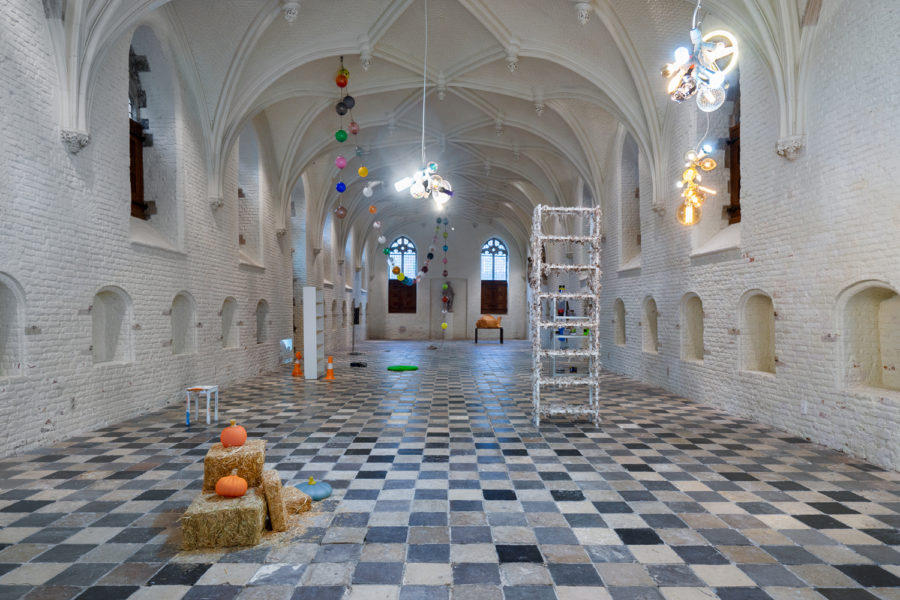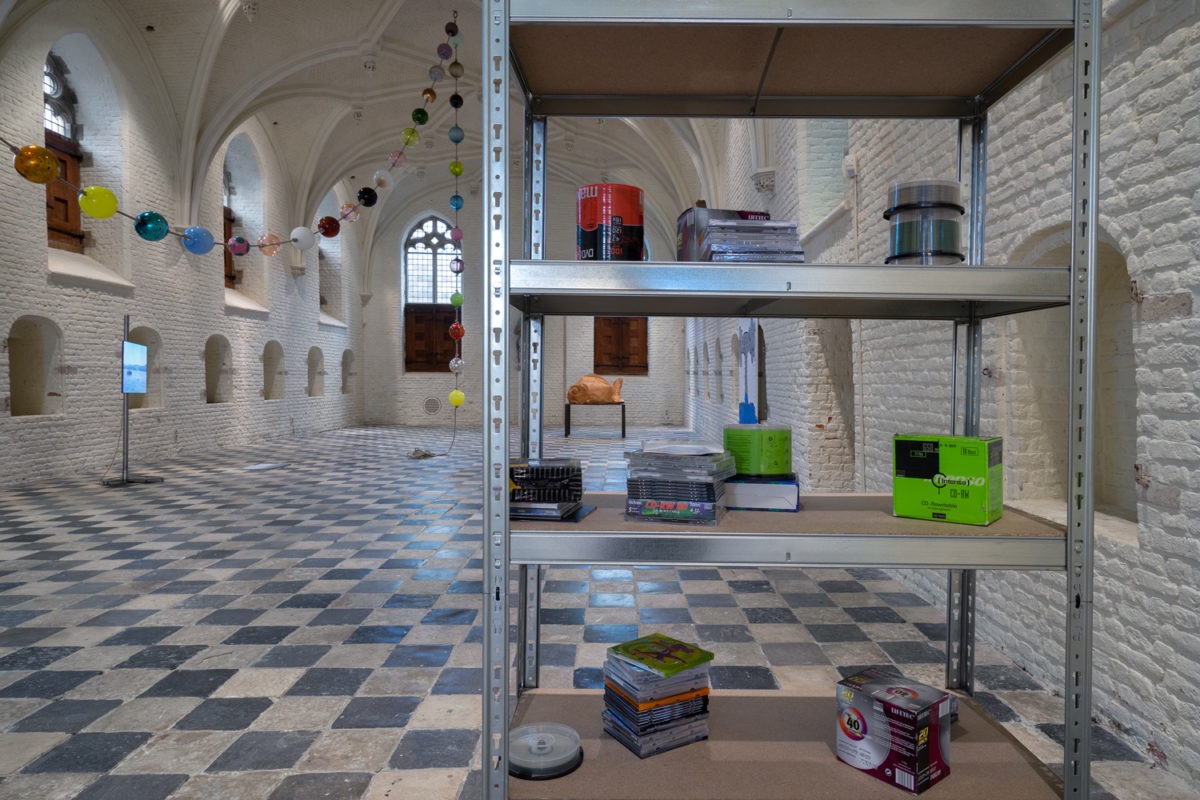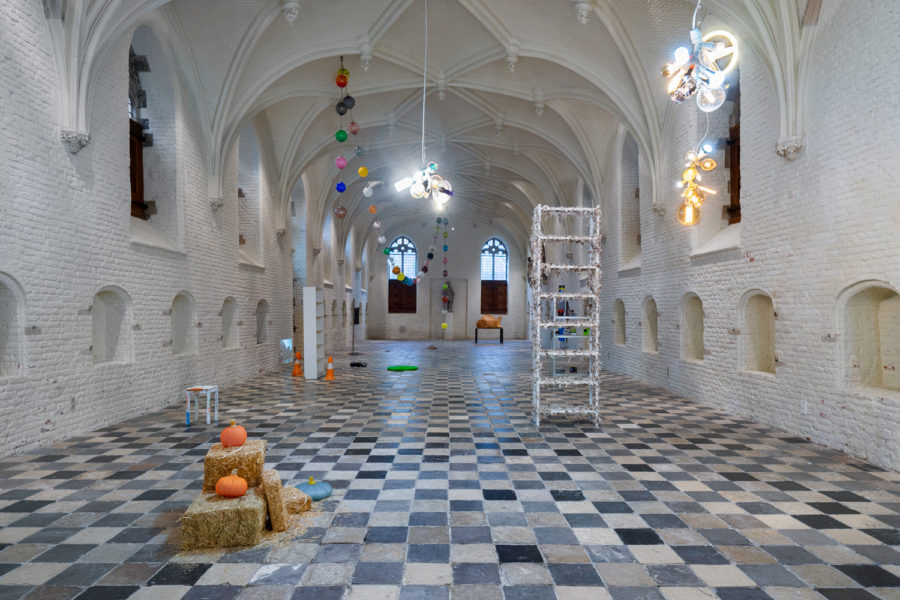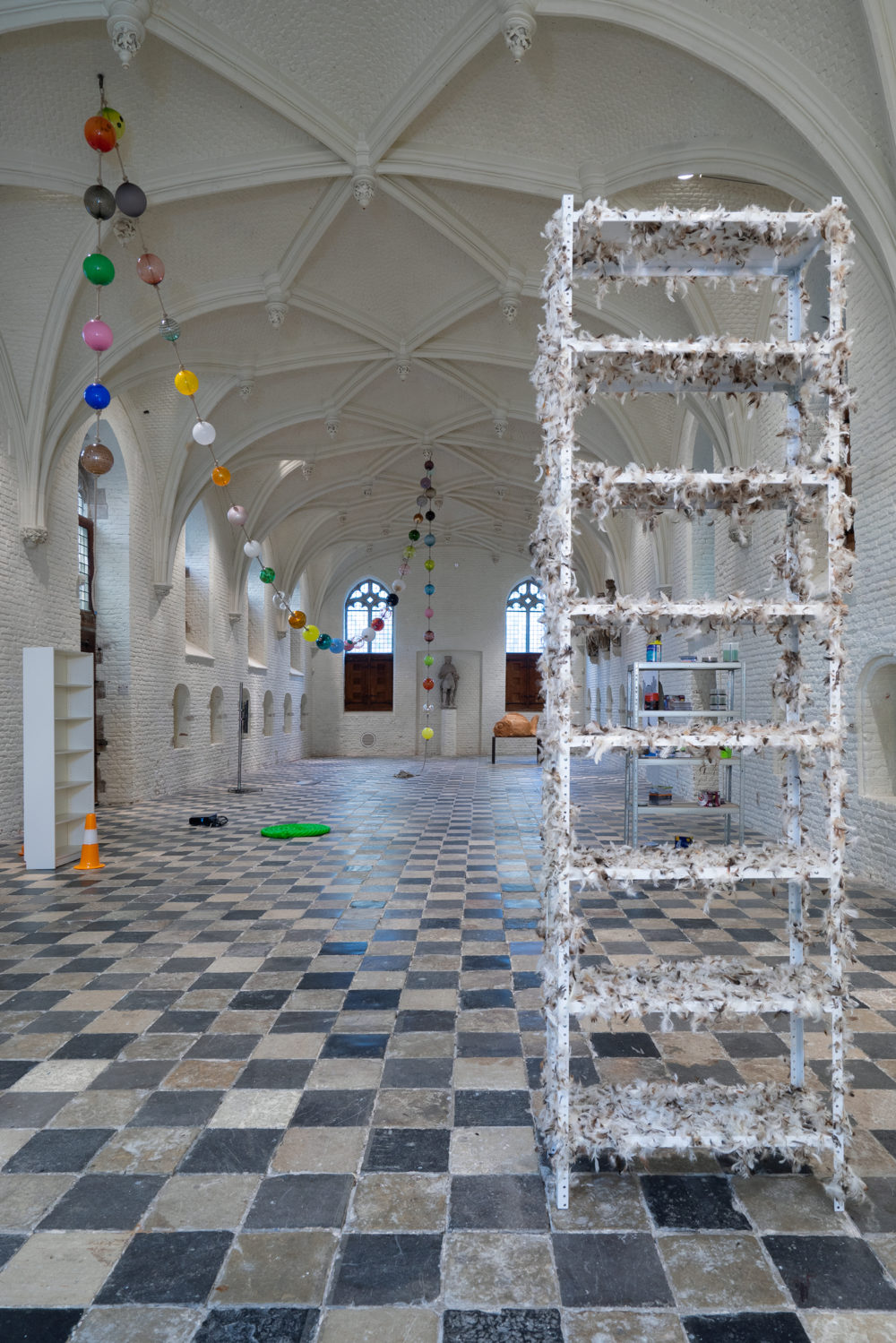Kaspar Müller: Allegiance & Oblivion
Vleeshal is pleased to present the first large institutional solo exhibition of Kaspar Müller (1983, Schaffhausen) in the Netherlands. Playing with the idea at what point an artist is allowed to do a retrospective, Müller presents his retrospective now, bringing together a wide range of works from the last ten years of his career.
The exhibition at Vleeshal offers a continuation of Müller’s research around the migration of meanings and values commonly attributed to images and objects. At first glance, the works give themselves to the viewer in the shape of icons or constellations of symbols; more vaguely, they operate as devices that expand in space and time, to suggest alternative scenarios of dispersion and recapture. The title of the show—after his first solo exhibition at Federico Vavassori—is meant to suggest a dialectical friction between a loyalty to the codes of cultures as of art (allegiance as devotion) and a reality of things which, alas, we are not able to grasp and rather constantly fail to achieve (oblivion, as amnesia, but also nothingness, silence).
Müller often infuses his artworks with a certain black humor: some are conceived to comment on the creative process itself and on creativity as a palliation of the effects of capitalist economy in sociocultural contexts such as the Western one in which we find ourselves. “The humor is basically mechanical: it’s the laughter provoked by watching something break down. I’m interested in heightening the failures that are intrinsically part of any system of representation. There is an implicit absurdity in the positions artists assume to make up for these malfunctions. It’s like watching someone slip and pretending nothing happened,” says Müller in an interview.
A mode of Müller’s process is accumulation of objects and images, which are submitted to the viewer beyond any cataloging or order, but only and joyfully in their variety and heterogeneity. Works which develop into series—think of furniture such as wardrobes, bookcases, and trunks—coexist with works that include series of objects and/or images—think of the crowns of blown glass bubbles that are, perhaps, Müller’s most iconic work. In these works, a metonymic tension between the part and the whole results in a collection of individualities that the viewer can only experience in two ways: through the juxtaposition between the parts, hence the assertive exercise of comparing the quality of each glass orb; or the awareness of one’s own otherness in relation to the work, an entity alien to the viewer. These works are inclusive and engaging, but at the same they hint at the solitude of both work and viewer, both subjects doomed to wander among a multiplicity of status and contexts. Artworks, exhibitions, such as the lives of individual, become codes themselves, symbols to be reinvented, in that virtual dimension hovering between reality and abstraction, which is memory in the present.
The things Müller makes contain something unsayable, strange and moving. They celebrate life in its uncertainties and contradictions, and ask their audience to consider them. The fact that art can resiliently stand up to so much interrogation is as much a part of Müller’s work as his line of questioning.*
Curator: Roos Gortzak
*Following Müller’s strategy to present originals and copies on a same non-hierarchical level to question their difference, this text consists of fragments copied and pasted from other sources; Patrick Armstrong, "Kaspar Müller at The Downer," 2018; Michele D’Aurizio, "Allegiance and Oblivion," 2014; Fabrice Stroun and Tenzing Barshee, "Kaspar Müller in conversation with Fabrice Stroun and Tenzing Barshee," 2013.
For more information please visit Vleeshal.




